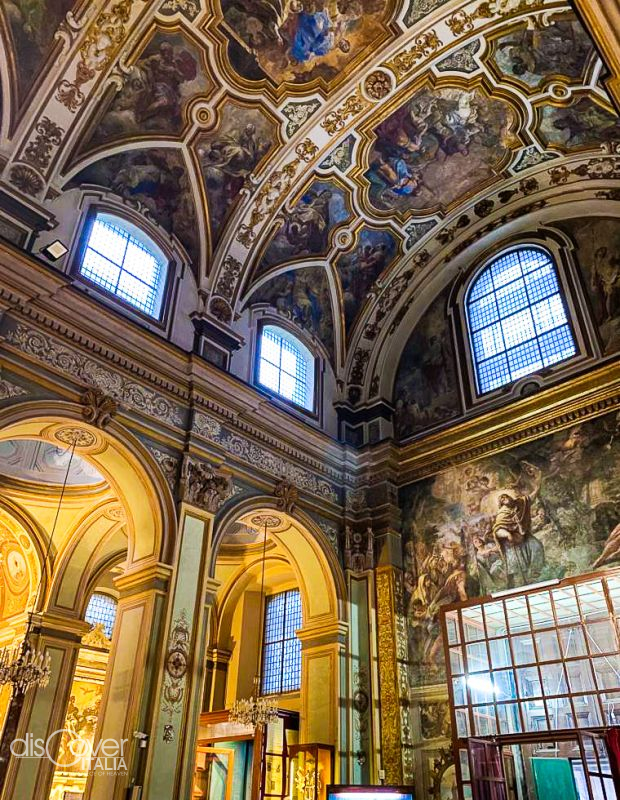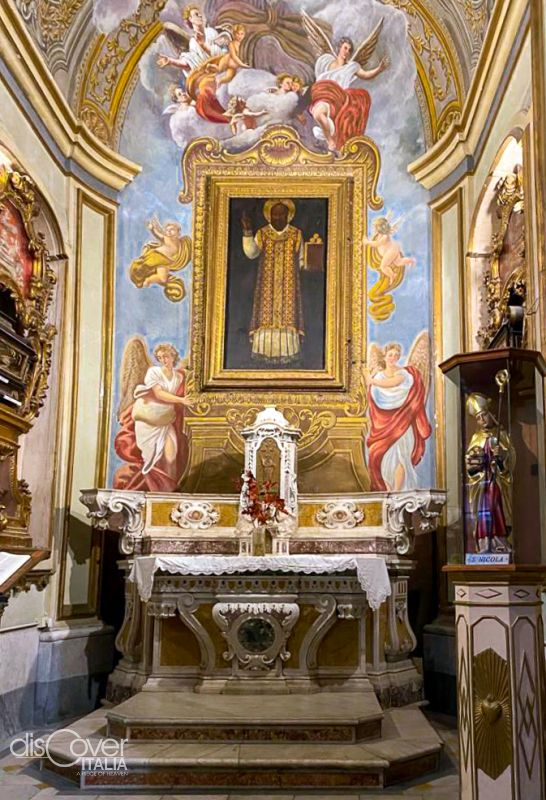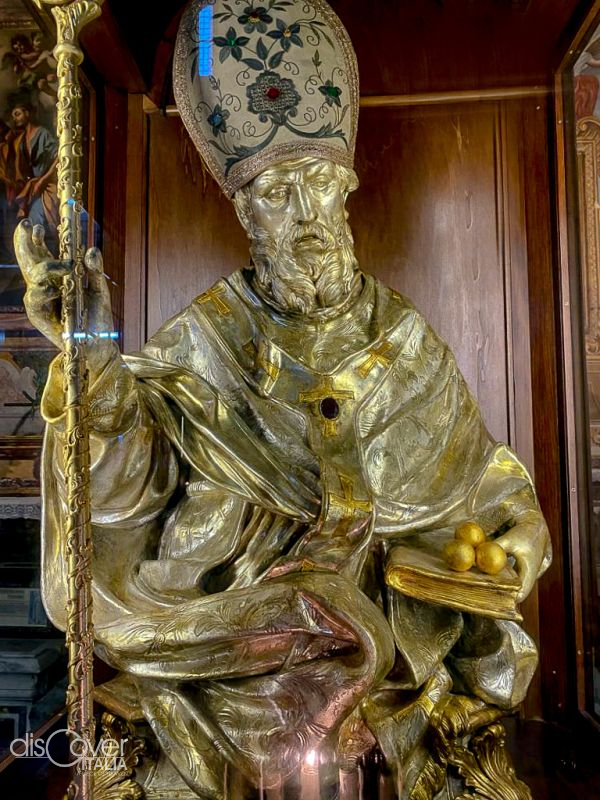 The first glance already confirms that curiosity was a good advisor. The church of St. Nicholas at Carità with a Latin cross and three naves, baroque, shows frescoes and paintings also of large size, brought back to their original beauty by recent restorations, while for others, including part of the ceiling, the work of the restorers is still ongoing. Reading the information about the history of the temple and the works on display, it becomes clear that it is a treasure trove of 17th-18th century art, recognized as the golden age of painting in the city of Partenope. And to think that according to tradition everything would have started from a sack of rags.
The first glance already confirms that curiosity was a good advisor. The church of St. Nicholas at Carità with a Latin cross and three naves, baroque, shows frescoes and paintings also of large size, brought back to their original beauty by recent restorations, while for others, including part of the ceiling, the work of the restorers is still ongoing. Reading the information about the history of the temple and the works on display, it becomes clear that it is a treasure trove of 17th-18th century art, recognized as the golden age of painting in the city of Partenope. And to think that according to tradition everything would have started from a sack of rags.
It was founded by the Congregation of the Pardi Pii Workers, called to care for the poor. It’s said that a beggar guest of their House of St. Giorgio left them a pile of rags in inheritance, urging them to make good use of them after his death. In that miserable legacy, six thousand ducats were found with which the land in the area of Toledo was bought. Decisive to start building (and this time history confirms it) was another gift in 1646, six thousand ducats again, by the noble Giovan Battista Burgo, who wanted to remain anonymous.
On that land was located a newsstand dedicated to St. Nicholas. The works on the new church began on January 8, 1647 and proceeded with considerable slowness for about a decade, until 1656, the year of a severe plague that saw the congregation particularly busy. After the plague, the construction site regained momentum, also thanks to the commitment of a group of architects. Among them, the great Cosimo Fanzago, who completed the construction in 1682. The church was consecrated in 1716 by Cardinal Antonio Pignatelli, but the beginning of the facade was postponed to 1723 on a project by Francesco Solimena and was completed posthumously in 1776. The two angels present there and holding a bronze shield with the bust of St. Nicholas are by Paolo Persico.
The magnificence of the central nave is all thanks to Francesco Solimena, author of the frescoes like Episodes from the life of St. Nicholas of Bari as well as those dedicated to the Apostles and Virtues in the lateral segments. The hand of Solimena in 1697 was creator of the paintings The preaching of San Giovanni Battista and The preaching of San Paolo on the fanlight between the central window of the counter-facade. This is dominated by the creation of Paolo De Matteis St. Nichoas that drives the demons away from the tree of 1712. De Matteis is also the decoration of the spandrels of the cupola with the representations of the Evangelists.


Author of the frescoes of the dome, depicting Paradise in the central scene and eight Doctors of the Church between the windows, is Francesco De Mura, first of Solimena's students. He is also the creator of The visitation of the Most Holy Mary to Saint Elizabeth on the door of the sacristy. Other works by Solimena are the paintings in the transepts: on the left the Madonna with Child between Saints Peter and Paul and on the right St. Francis of Assisi, Saint Francis of Sales and Saint Anthony of Padua.
 In the first chapel on the right, dedicated to the Holy Trinity, is the tomb of Carlo Carafa, founder of the Order of the Pii Workers, of which the 17th century bust and the wax funerary mask are exhibited. With the paintings by Giacinto Diano Departure and Arrival of Tobias. The second chapel takes its name from a valuable wooden crucifix by the great sculptor Nicola Fumo. The third chapel, dedicated to St. Michael first and then to St. Liborio, houses other works by De Mura, on the altar and on the side walls Archangel St. Michael and the Archangel Raphael.
In the first chapel on the right, dedicated to the Holy Trinity, is the tomb of Carlo Carafa, founder of the Order of the Pii Workers, of which the 17th century bust and the wax funerary mask are exhibited. With the paintings by Giacinto Diano Departure and Arrival of Tobias. The second chapel takes its name from a valuable wooden crucifix by the great sculptor Nicola Fumo. The third chapel, dedicated to St. Michael first and then to St. Liborio, houses other works by De Mura, on the altar and on the side walls Archangel St. Michael and the Archangel Raphael.
On the left, the first chapel is dedicated to St. Joseph with paintings by Paolo De Majo: Marriage of the Virgin with St. Joseph, St. Charles Borromeo and St. Andrea from Avellino. De Mura's art is still protagonist in the second chapel, the first created in the church and dedicated to St. Nicholas. His are three canvases depicting the Miracles of St. Nicholas. In the third chapel of the Guardian Angel, the altarpiece that gives its name and two paintings of St. Francis of Paola and St. Apollonia by Pietro Bardellino can be distinguished.
The church of St. Nicholas the Charitable also boasts one of the most important monumental nativity scenes in the city, work of Giuseppe Russo. It is composed by six scenes depicting the life of Christ and the daily life in Naples in the 18th century. Figures dressed in ancient and precious fabrics and details indicating their various jobs. A small masterpiece exhibited during the Christmas period in the basement of a church that is always worth to visit and admire along via Toledo.




Comments powered by CComment